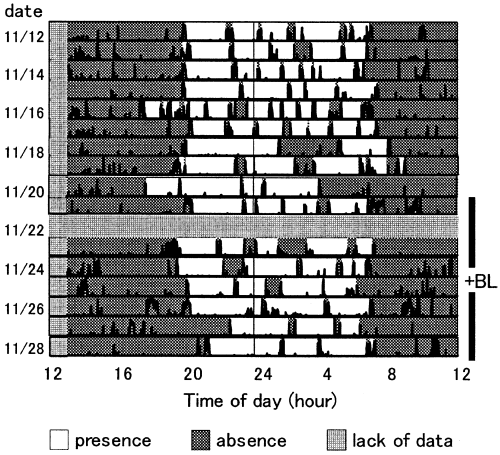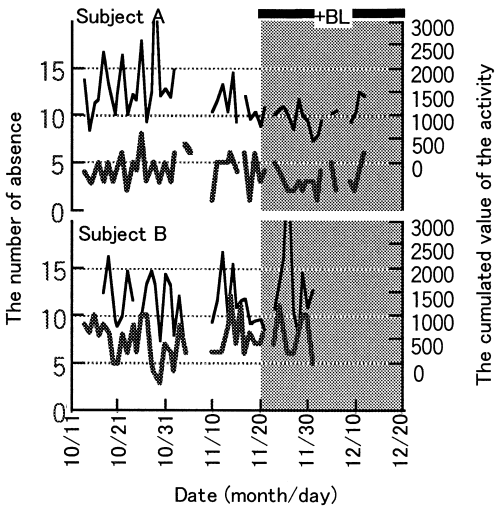Use of an infrared sensor system to take long-term bedside measurements of rest–activity patterns in the elderly with dementia
Abstract
Abstract In order to study long-term rest–activity patterns of elderly residents in care facilities, an infrared sensor system was developed. This sensor system detects a resident’s presence or absence from their bed and their activity with little inconvenience. Using this system, the rest–activity patterns of two elderly people with dementia was assessed over a period of 3 months. For both subjects, frequent activity peaks and absences from their beds were often observed during the night. Such a sensor system will be useful for evaluating the sleep–wake rhythms of people with sleep disorders.
INTRODUCTION
In care facilities for the elderly, the management of a healthy sleep–wake rhythm in residents is an important task. However, quantitative assessments of sleep–wake rhythms are not convenient. In the present study, an infrared sensor system that automatically monitors a resident’s presence or absence from their bed and their activity was developed.
SUBJECTS AND METHOD
Two elderly residents (subject A, male, 89 years; subject B, female, 81 years) with dementia residing in a care facility were studied. Written informed consent was obtained from their family members. A sensor system composed of infrared sensors (AMN1 and AMB3; Matsushita Electric Works, Ltd, Osaka, Japan) was equipped at a height of 1.5 m from each of their beds. Using this sensor system, the subjects’ presence or absence from their bed and their activity were recorded over a period of 3 months without the subjects’ awareness. Activity was evaluated at intervals of 1 min as the cumulative value of infrared power detected from human body movement. Several nights during the study period, image data from the subjects’ bedrooms were videotaped to check the efficiency of the sensor system. Lighting conditions in the living room, where most of the residents spend their time during the day, was controlled as follows. In the first 2 months, illumination was approximately 300 lux at table top level, and was increased up to 2800 lux for 3 h around lunchtime by bright light exposure units (Matsushita Electric Works, Ltd) during the final month.1,2
RESULTS
Figure 1 illustrates an example of a rest–activity pattern comprising bedside presence and activity. The detected activity peaks corresponded to lying down, turning over or getting up motions, as witnessed in the image data. In both subjects, absences (i.e. getting out of bed) were often observed throughout the night. Figure 2 shows the number of absences and cumulated activity at night. After daytime illumination was increased, the above two indices decreased in subject A. Similar changes were unclear in subject B.

. Rest–activity pattern of subject A (17 days). Line plot indicates the activity. + BL, bright light exposure period.

. Longitudinal variation in the number of absences (––) and the cumulated value of the activity (––) during the night (21.00–06.30 hours). Several data were removed because of lack of a recording or because subjects’ were in bad physical condition.
DISCUSSION
In field studies, the recording of long-term sleep-logs is labour-intensive. The sensing method used during the present study can offer a precise and quantitative rest–activity pattern instead of sleep-logs with little inconvenience to subjects. In cases of the elderly with dementia, increased activity signals from a subject’s bed would suggest sleep disturbances, and frequent absences during the night would suggest wandering or frequent urination. Such data helps us to understand the quality of life of residents in care facilities.
Further research is needed to confirm the effects of lunchtime bright light exposure on night-time rest–activity patterns.
ACKNOWLEDGEMENTS
This study was supported by the Ministry of Economy, Trade and Industry and the New Energy and Industrial Technology Development Organization (NEDO) as part of the project ‘Behavior-based human environment creation technology’.




